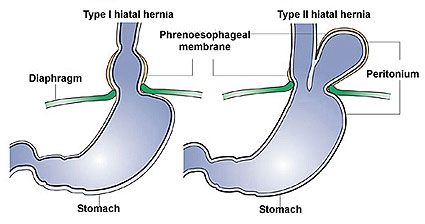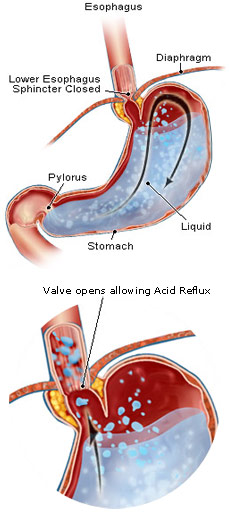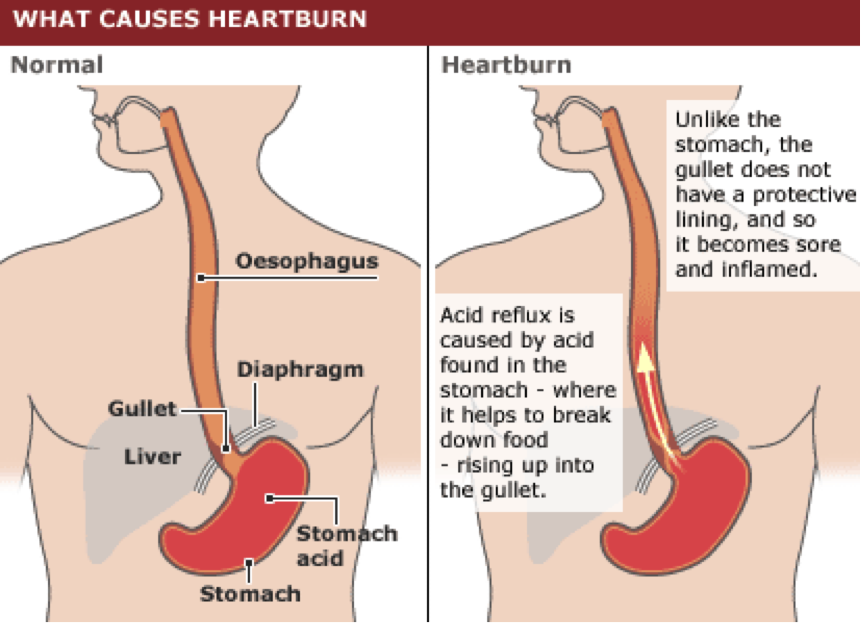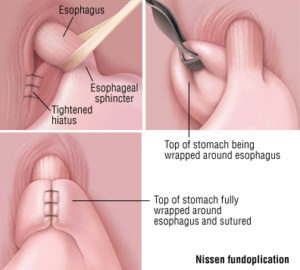What Is Laparoscopic (Key Hole) Surgery? Is It Safe?
October 25, 2017PILONIDAL ABSCESS
January 11, 2018Acidity Overview
Hernia is a condition where a part of the body pushes through the muscular layer holding that part in its place. It is a condition where the stomach pushes through the diaphragm (muscle holding the stomach inside the abdomen) into the chest. It is more common among people above the age of fifty years, as the muscles become weaker. When the same is found in a person when young, having the symptoms of Hiatus Hernia, it needs to be repaired.


Symptoms:
As a result of the change in the anatomy, the mechanism which do not let acid reach the oesophagus (food pipe) but hold the acid inside the stomach are not functioning. This leads to scid reflux into oesophagus causing Oesophagitis (burning of the innermost layer of oesophagus) which is commonly presented as heart burn. Some people experience retro sternal pain.
 Other symptoms include – acid taste in the mouth, feeling of food stuck in the chest, belching and cough especially while lying down or bending.
Other symptoms include – acid taste in the mouth, feeling of food stuck in the chest, belching and cough especially while lying down or bending.
Rarely, recurrent sore throat, gum problems and bad breath.
It is important to note that people who are diagnosed with Hiatus Hernia need surgery. It is also true that people suffering from acidity do not have Hiatus Hernia.
I follow a simple algorithm for people who are diagnosed with Hiatus Hernia and have acidity symptoms. Let’s say one is diagnosed with Hiatus Hernia and is suffering from acidity symptoms.
First step is always the change in life style which include –
- Quitting smoking or tobacco
- Eating at least three hours before going to bed
- Quitting alcohol or being within the normal limits
- Avoiding too much of spicy food: We indians (I consider myself as Indian though, I no longer hold Indian passport) cannot eat food without spices. The food should be spicy enough to give taste, but should not result in acidity.
Second step is medicines which belong to family called proton pump inhibitors. (Omepraole/pantaprazole/lansoprazole/esmoprazole/rabiprazole/iloprazole). Though different manufactures claim one is better than the other, there are differences in the laboratory. When different medicines are tested, it is unlikely that clinically there is any difference when one takes any of these medicines. Usually, one dose of any of these medicines supresses acid production by less than ninety-five percent.
If the symptoms are relived with course of these medicines, then no further action is required.
Sadly, if one counts the number of acidity medicines sold in India, it might be equal to the number of chocolates being sold. These medicines are easily available over the counter.
**NOTE** in India we probabaly have more than two thousand brand names containing one of these medicines. A single brand name from a good manufacturer will do the work. **
**NOTE** All abdominal problems are not related to acidity. Do not
self-medicate with acidity medicines. Remember, they are medicines and have side effects. People above the age of fifty-five years with new onset symptoms or if symptoms do not settle in two weeks then an expert should be consulted. **
Third step is surgery. In my opinion, following are a group of people who must undergo surgery –
- When medicines do not give complete cure and there are a few symptoms still persisting inspite of taking medicines.
- Symptoms are usually suppressed when one is on medication, but the symptoms return as soon as one discontinues medicines.
- One does not wish to take medicines life long and risk serious nutritional deficiencies. Patients are not advised to take medicines for long duration as one can have side effects like low calcium and other vitamin deficiencies, altered thyroid function, altered intestinal flora leading to loose motion or cramps or abdominal pain, abdominal bloating etc.
**NOTE** Surgery in select patients will not cure symptoms allowing one to lead a normal life. It is proven to be economically better compared to long term acidity medicines**
Most common surgery performed is called nissen fundoplication. During this procedure –
- Stomach which is the chest is brought down to anatomically normal position.
- Diaphragm which is weak, is strengthened with non-absorbable structures.
- Stomach is wrapped around lower oesophagus to add extra strength to the gastro-oesophageal vavle.


Complications:
Barrett’s Oesophagus: Happens because of reflux of acid into stomach.
Cancer of Esophagus: 1 or 2/100 barett’s oesophagus develop cancer.
Stricture or narrowing of oesophagus: Caused by acid reflux
Twisting or starngulation: This is very rare occurrence, but might need major immediate life-saving surgery.
